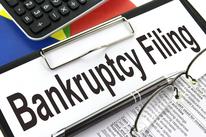By, Ronald J. Barba

As part of our practice representing common interest communities in their collection efforts, we have to deal with unit owners who file bankruptcy owing substantial fees to the Association. Although the evidence is anecdotal, there appears to be a considerable increase in the number of bankruptcy filings in our cases. When trying to collect back common charges from defaulting unit owners, there are some important facts about bankruptcy that Association Boards should keep in mind.
When an individual files a bankruptcy petition, any and all collection efforts must cease. Filing a bankruptcy petition creates an automatic stay of any attempt to collect from the debtor on pain of contempt and possible fines and/or attorney’s fees. So, what can the Association do if the debtor is protected from collection efforts? We’ll get into that shortly, but it is probably a good idea to provide a small primer on the types of bankruptcy cases that are normally involved with Association collections.
The typical bankruptcy is known as a “Chapter 7” bankruptcy. It is an effort by the debtor to discharge his or her personal liability to repay all non-secured debt. Chapter 7 bankruptcies are very common and can take many months before the discharge is entered by the court, the estate is closed and the automatic stay lifted. The next most used type of bankruptcy petitions is the “Chapter 13.” Chapter 13 bankruptcies are designed to provide the debtor an opportunity to remove some debts and to pay the remaining debts over a five-year period. Typically, the debtor and his or her attorney will take six months to design a re-payment plan to submit to the bankruptcy trustee and court wherein the debtor pays a fixed amount to the trustee on a monthly basis. The trustee then disperses percentages of those funds paid to the various debtors named in the plan.
Does that mean that an Association must wait five years to be paid? The answer is yes and no. The debtor is able to include all of the common charge debt due and owing prior to the bankruptcy filing into the repayment plan, this amount is often referred to as “pre-petition debt”. While Chapter 13 debtors enjoy some relief from the pre-petition debt, they are still obligated to pay the ongoing common charges. It is also important to file a “proof of claim” early in the bankruptcy case as failure to do so can result in the Association’s debt losing its secured status.
Given the short window of priority that the common charges receive, Associations must consider moving quickly to obtain relief from the automatic stay. In Chapter 7 cases, the Association must be able to prove that the debtor failed to provide adequate protection of the Association’s interest or there is insufficient equity in the unit. The same bases apply to relief in Chapter 13 cases with the added claim that the debtor failed to make timely “post-petition payments” which provides creditors “cause”.
There are many other issues with bankruptcy that Association’s should know, but suffice to say the only mistake for an Association in this realm is to do nothing.

